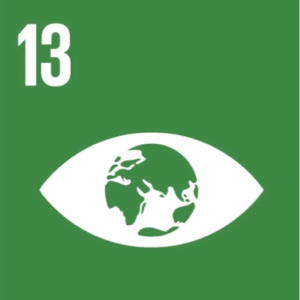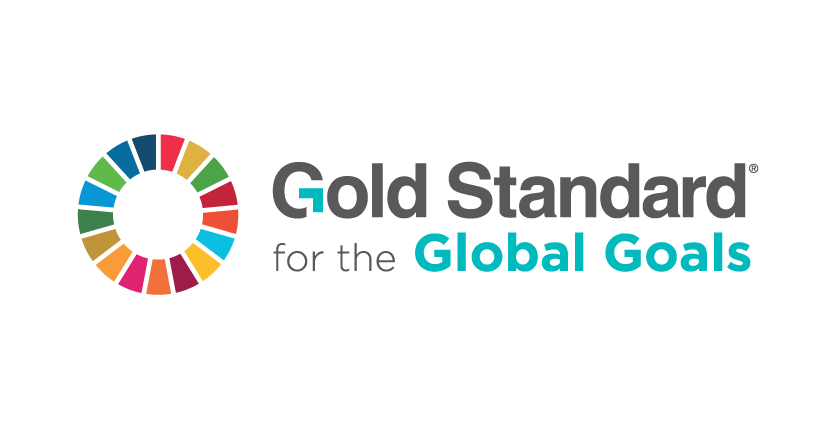Summary of the second consultation of Gold Standard for the Global Goals
Gold Standard thanks all reviewers for the hundreds of comments received during the 2017 consultation for Gold Standard for the Global Goals. We have highlighted some of the most common questions and our responses below.
What is the added value of Gold Standard for the Global Goals for project developers?
Further differentiate your projects from others in the carbon markets by strengthening safeguards, especially around water and gender, elevating 'co-benefits' to certified SDG contributions, and allowing projects targeting vulnerable communities to distinguish themselves with a 'pro-poor' flag. Our partnership with UNFCCC is expected to further elevate the visibility and credibility of the Gold Standard brand.
Seek new sources of funding by combining methodologies and issuing products from a single project that were previously only available under distinct standards.
Ensure relevance of projects post-2020 by enabling issuance of certified emission reduction statements rather than carbon credits in places where double counting may occur and enhancing the ability to demonstrate contributions to the host country's SDG priorities. In this way, transitioning to Gold Standard for the Global Goals can provide flexibility that can ‘future-proof’ your projects.
Streamline the certification process in the future through a new IT infrastructure that will facilitate project design processes, shorten review periods, automate monitoring where possible, and enhance reporting capabilities. New online tools like the CookstoveIQTM tool (now in final testing) are expected to significantly simplify project implementation, certification, and reporting and remove barriers, particularly for smaller projects and those in least developed countries.
In addition, by introducing a Gold Standard renewable energy attribute product (e.g., Renewable Energy Certificate, or REC) label that is now possible under Gold Standard for the Global Goals, we are working to reduce the supply of renewable energy carbon credits in the market while opening up new markets for Gold Standard renewable energy projects.
Is Gold Standard moving away from offsetting?
Absolutely not. On the contrary, we are working with CDP and WWF to define best practice corporate climate action that includes contributions to climate finance, which can be fulfilled through purchasing high-quality carbon credits. (Read about additional demand building efforts below). Further, in light of the negotiations around the Paris Agreement, Gold Standard for the Global Goals provides the FLEXIBILITY for projects to issue certified emission reduction statements rather than carbon credits in the instances where double counting would otherwise occur. However, our objective remains the same: Increase funding to projects on the ground that are reducing emissions and delivering sustainable development benefits.
What efficiencies to the Gold Standard certification process will be included?
Gold Standard for the Global Goals will come with a number of amendments to the certification process that are expected to reduce time scales:
• Retro-active projects are not assumed to require a Pre-Feasibility Assessment or PFA (called a Preliminary Review in Gold Standard for the Global Goals terminology).
• Projects may validate and conduct first verification concurrently.
• Project Design Review (formerly Registration Review) is reduced from 6 weeks to 4 weeks.
• Consistency of review findings is improved because Gold Standard certification has now been updated to reflect a single reviewer of each project (increasing to 2 for ‘high risk’ project types, for example, very large scale or first-of-kind).
What will be the transition requirements for existing projects?
We intend that all projects will transition to Gold Standard for the Global Goals from earlier versions, with grace periods to accommodate timing. Typically, a project will transition at its next verification that takes place six months after the go-live date of the standard (scheduled for August 2017), though earlier is available at developer discretion. Projects approaching the end of their fixed crediting period will not be required to transition. Although the transition requires some additional attention from project developers, the process will be kept simple. By having all active projects ultimately transition to one single standard, Gold Standard will be able to focus all its efforts on greater support to developers, faster speed of decision making, and efficiency improvements that benefit everyone. We will also offer additional support for a limited number of projects who wish to be among the first to transition to Gold Standard for the Global Goals. Please contact [email protected] if you would like to be considered.
Does the new standard increase the workload of the project developer?
The process is similar to previous versions of Gold Standard, with certain enhancements that have built upon existing principles. Most notably, these include:
Safeguarding principles – Gold Standard for the Global Goals safeguards are more extensive and detailed than previous Do No Harm approaches. This reflects latest best practice and the level of integrity required of Gold Standard. Although the requirements appear long and detailed, many are similar to previous requirements but provide further clarity and detail. They also bring together the safeguards from across the previous versions of Energy, Land Use and Water to create a single, unified Gold Standard safeguarding approach. Specific project types will have supporting guidance that allows developers to bypass those safeguards that are irrelevant to their project type.
Annual reporting – The addition of annual reports serves to inform Gold Standard that the project is still active and to communicate updates with stakeholders. This is a new requirement, but it is not part of certification and is not associated with any Gold Standard review. The report is to be kept simple, limited to any key updates and activities undertaken and any feedback received from stakeholders.
New impacts and products – The application of new methodologies, such as quantifying health impacts using the ADALY methodology, or issuance of new products like the renewable energy attribute product, is optional for project developers who wish to seek additional funding for their project impacts; it is not required.
How will the standard be applied to different activity types?
For key activity types, a document will be provided confirming the maximum certification periods, any deemed additionality, which safeguards are applicable and any activity-specific rules (for example, those for large hydro). A series of webinars will be available to explain these specific applications once Gold Standard for the Global Goals is published.
Will Gold Standard require prescriptive rules around measurement and reporting of sustainable development impacts that are not individually monetised?
Gold Standard will develop and provide a user friendly, efficient online SDG tool that project developers have the option of using to demonstrate the SDG contributions of their project.
Project developers are free to use their own tools or methods if they prefer. However, in order to be a Gold Standard sanctioned claim, these SDG contributions must be audited by a Gold Standard-approved third party Validation and Verification Body and certified by Gold Standard. This will also apply to claims associated with the Gold Standard SDG tool.
Which auditors will be eligible to assess Gold Standard projects?
We intend to build upon our existing audit community and expand it to include other accreditation pathways and a strengthened performance management, support and training procedure. An enhanced version of our existing approach will be available at the go-live date of Gold Standard for the Global Goals (scheduled for August 2017), and Gold Standard will continue to improve this in the coming years as we seek full ISEAL Membership.
How will the standard align with Clean Development Mechanism (CDM) timelines, which are different?
Gold Standard timelines will apply, requiring a review of specific Gold Standard renewal points at year five (for example, Operational Financial Need) in order to continue to issue Gold Standard CER Labels. The maximum crediting period will be capped to Gold Standard’s requirements. It is intended to provide support to avoid the need for further verification to review at five-year renewal.
What will the fees be for the new standard?
We are currently considering the implications of the new standard on our fee structure, as the model introduces new dimensions of certification, such as certification of a project or activity without issuance of any product such as, for example, verified emission reductions (VERs) or certified emission reductions (CERs). These will be shared in due course.


